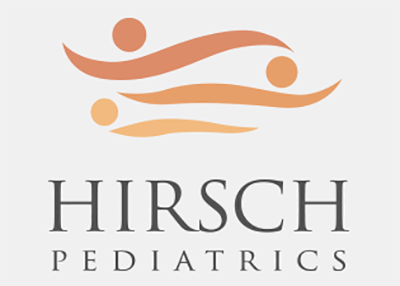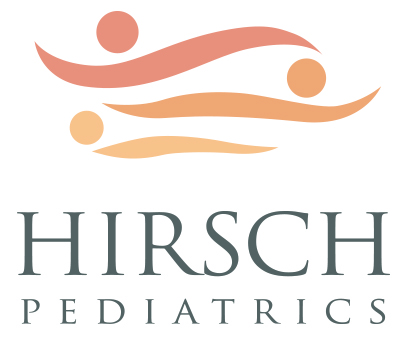Please Note: These guidelines are only for children who are fully vaccinated with no chronic medical illnesses.
These guidelines provide general guidance and should not be used as a substitute for the individual advice provided over the phone or at an appointment. If you have any significant or ongoing concerns, please call the office. Please contact Hirsch Pediatrics or go to the ER if your child is under 2 months old and has a fever (rectal temperature of 100.4 Fahrenheit or 38 Celsius).
These guidelines are written for patients of Hirsch Pediatrics and may not be copied or used without the written permission of Dr. Hirsch.
Is constipation common in children?
- YES, IT IS VERY COMMON IN CHILDREN OF ALL AGES from the newborn through teenage years.
- Constipation tends to peak around the age solid foods are introduced (age 5-12 months) and during potty training (age 2 – 3 years).
- Most constipated children have particularly efficient colons that remove too much water from the poop before the poop can be eliminated. Other children may become constipated if they have not yet acquired the skill of pooping regularly (newborns) or actively withhold their poop (toddlers).
What are some of the ways that constipation presents in children?
- Your child has poops that are hard pellets or balls.
- Your child may pass exceptionally large poops that can even block up the toilet or seem enormous for a small child.
- Your child may have pain when pooping and even refuse to poop due to the pain.
- Your child may have vague belly pain or occasional nausea and may even vomit.
- You notice blood streaks on the stool due to hard stool causing small tears in the rectum.
- Your child has difficulty urinating on a regular schedule (dysfunctional voiding). This can present as children who suddenly need to urinate small amounts every 15 – 30 minutes despite having normal urine tests.
- Your child has a urinary tract infection due to excessive stool in the colon which puts pressure on the urethra leading to incomplete emptying of the bladder.
- You notice behavior changes such as increased fussiness and hyperactivity as well as poor sleep quality that are often related to your child’s pooping habits.
- You see leakage of poop (encopresis) into the underwear without the child knowing. (Note: Though this leakage may seem like the child is having diarrhea, it is actually a sign of severe constipation.)
- Your child is having difficulty staying dry overnight (enuresis) due to excessive stool in the colon pushing on the bladder leading to limited capacity for the bladder to hold urine.
If I do not treat my child’s constipation, will it just work itself out as my child gets older?
- USUALLY NOT. Unfortunately, many children whose constipation is not managed early and aggressively can have long-term stretching of the colon which can lead to a colon that is ineffective long-term.
Can I use dietary changes instead to treat constipation?
- Though adults are sometimes successful at managing constipation with dietary changes (i.e. increasing water and fiber intake), children rarely respond long-term to dietary changes alone.
What dose Dr. Hirsch recommend to treat mild constipation?
- Age 2 weeks – 1 month:
- Apply rectal stimulation with a Q-tip or thermometer that has Vaseline on the tip. This can be repeated two or three times in one day.
- If your child still has no poop in another 24 hours, then you can use a “sliver” of a Pedia-Lax Glycerin Suppository.
- In addition, the Windi (made by the same company as the NoseFrida) is a non-medicated remedy that is exceptionally helpful for small infants and is available online, at local pharmacies, and at baby stores.
- Call Dr. Hirsch during regular hours if you have tried the above interventions and your child still has not pooped in another 24 hours.
- Age 2 – 12 months:
- Start with prune juice 2 – 4 oz per day per day. The prune juice is the regular adult full strength prune juice and is much more effective than other juices or pureed prunes. Prune juice can be given in a bottle or mixed in cereal for children already on solid foods. Some children will only need prune juice for a few days while others may need it continuously for several weeks or months as their colons mature.
- If your child is still constipated despite maximizing the prune juice dosage or is now refusing to take the prune juice, then you should begin Miralax powder with a starting dose of ¼ capful up to a typical maximum dose of ½ capful per day.
- Age 1 year and older:
- Give Miralax powder with a typical starting dose of ½ capful up to a typical maximum dose up to 1 capful per day.
Is it safe to give my child Miralax every day for several months (or longer)?
- Miralax can be used safely even if given daily for many years.
How does Miralax work?
- Miralax (generic name is polyethylene glycol) is a powder that can easily be dissolved in any amount of liquid. The dissolved powder is not digested and stays in the colon as an osmotic agent. This means it retains water in the colon keeping the stool from becoming hard and therefore difficult to pass. Because Miralax is not absorbed into the body, it will not have any systemic side effects. It will also not cause malabsorption of other nutrients and vitamins.
Will my child become “addicted” to Miralax?
- No, Miralax is non-habit forming and you child cannot become addicted to Miralax.
I have been using Miralax but I think my child is still is very constipated. What should I do now?
- In order for moderate or severe constipation to be treated, you often need a “clean-out” phase. For the clean-out phase, it is best to use sennosides which are a natural, gentle stimulant. In my experience, the easiest and most effective form is an adult ExLax Regular Strength (15 mg) chocolate chew given at bedtime.
- Children age 2 – 6 can chew 1 piece at bedtime. Children 6 and older will need 1 – 2 pieces at bedtime. Typical duration of use for a “clean-out” is 2 – 5 nights until the poop no longer appears constipated.
- After the clean-out phase, make sure you continue your Miralax. Note that your child may have some nausea and belly pain during the ExLax clean out phase.
My child is having intense bouts of abdominal pain. What should I do now?
- Fortunately, as opposed to constipation, serious emergency causes of intense abdominal pain such as bowel obstruction or appendicitis are very rare. In general, children with emergency causes of abdominal pain will continue to have significant pain in between the cramps with minimal or no relief, will not be playful in between the cramps, will eat very little, and will get no relief from a Pedia-Lax Enema.
- Children with intense pain due to constipation will look and appear relatively well in between the bouts of severe pain, will be playful in between the cramps, will continue to eat fairly well, and will get immediate and significant relief from a Pedia-Lax Enema.
- If the pain is most consistent with constipation, you should immediately give a Pedia-Lax Enema (ages 2 – 4 give ½ bottle, ages 5 – 11 give full bottle).
- Note: If the intense pain is not consistent with constipation, you should make an immediate sick visit if during regular hours or go to the emergency room if during after-hours.
How do I know when my child is not constipated?
- Your child is not constipated when the poop is soft, normal sized, easy to pass, and comes every 24 hours. You should not notice any poop balls or pellets.
- The consistency of non-constipated poops can be formed but soft or as loose as a milkshake.
When my child is no longer constipated, when can I stop the medications?
- The most common mistake in managing constipation is to stop the treatments as soon as the poops are normal causing the child to have frequent future setbacks.
- Daily treatment will typically continue for several weeks, months, or even years depending on the duration of constipation before successful interventions were started. Dr. Hirsch will work with you to figure out an optimal schedule for reducing and stopping medications.
What can I do to encourage good stool habits that may expedite the process of weaning medications as well as encourage long-term success?
- It is helpful to have your child sit on the potty three times per day after meals, even if your child does not have to go potty. The child should sit on the potty for at least 1 minute for every year of age. For example, a 4 year old should sit on the potty for at least 4 minutes. You can make this a fun time with books and even a sticker reward chart. Use a step stool for your child’s feet since dangling feet make it harder to relax your muscles to poop.
- Minimize foods that are higher in fat (non-skim milk products, cheese, etc) since these can contribute to constipation. Encourage water and a good variety of fruits and vegetables.
- The book Mommy, I Have to Go Potty: A Parent’s Guide to Toilet Training by Jan Faull is a relatively short and easy to read book full of additional tips and strategies to encourage long-term pooping and potty training success.
What if we have tried the above interventions and my child is still constipated?
- Most likely this means we have not yet found the appropriate dosage and combination of medications. Note that some toddlers actually require doses of medications that are equivalent to or greater than typical adult doses.
When is a referral to a specialist indicated?
- Referral to a pediatric gastroenterologist is indicated when constipation continues to persist despite several attempts to optimize the medication. If necessary the specialist will be able to rule out other rare causes including food allergy, obstruction, celiac disease, and hypothyroid. Please contact us for a list of local pediatric gastroenterologists.
Looking for something else? Click here to view all of Dr. Hirsch’s medical advice topics.

